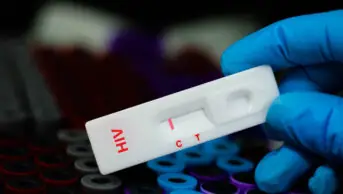Improving prescription writing is not merely about ensuring that handwritten prescriptions are legible, but more importantly it is about ensuring that the right quantity, strength, form, and dose/direction of a medication is prescribed for a specific indication. The prescription must also include the prescriber’s particulars, age (if under 12 years old), signature of prescriber, and an appropriate date for it to be legally supplied by the community pharmacy[1]. Errors in prescription writing slows down the dispensing process and causes delays with medicine collection by patient and deliveries to patient, which can adversely affect their health outcomes.
Now more than ever, with an ageing population in the UK, polypharmacy is on the rise. Polypharmacy means “many medications” and has often been defined to be present when a patient takes five or more medications[2]. I would suggest as a new initiative that the clinical indication is included in the dose/direction on the prescription, and should also be included on the label affixed on the medication itself. This will help to empower patients as they will know more about their medications and feel supported to take charge of their health.
I would also suggest that the annotation “specialist prescribed” is included on the prescription, in addition to the indication, because many times the doses prescribed are different from those stated in the BNF/EMC SmPC. This will also help pharmacists not to speculate the indication, especially when patient/representative is unsure, thereby helping the pharmacist make a more accurate assessment of the clinical appropriateness of prescription.
One of the key ways the relationship between GPs and community pharmacies can be strengthened is by having a direct line to reach each other, or even an email address that will provide quick responses to urgent queries within 24 hours. Effective communication must be timely- it is paramount for strengthing work relationships. The inability of the pharmacy team to reach the GP and vice versa slows down the dispensing process and challenges the delivery of safe and effective person-centred care.
GPs and community pharmacy teams should work closer together and support each other more as we serve the patients in our local community within the primary care setting together. I have observed that a lot of the times GPs tend to blame the pharmacy and vice versa for inefficiencies. I think it’s time to take responsibility and strive together to provide a better and first-class service.
Mercy Adeyemi
- 1Prescription writing. National Institute for Health and Care Excellence. 2024. https://bnf.nice.org.uk/medicines-guidance/prescription-writing/ (accessed May 2024)
- 2Varghese D, Ishida C, Haseer Koya H. Polypharmacy. National Library of Medicine. 2023. https://www.ncbi.nlm.nih.gov/books/NBK532953/#:~:text=Polypharmacy%20refers%20to%20using%20five,a%20review%20of%20current%20data (accessed May 2024)

